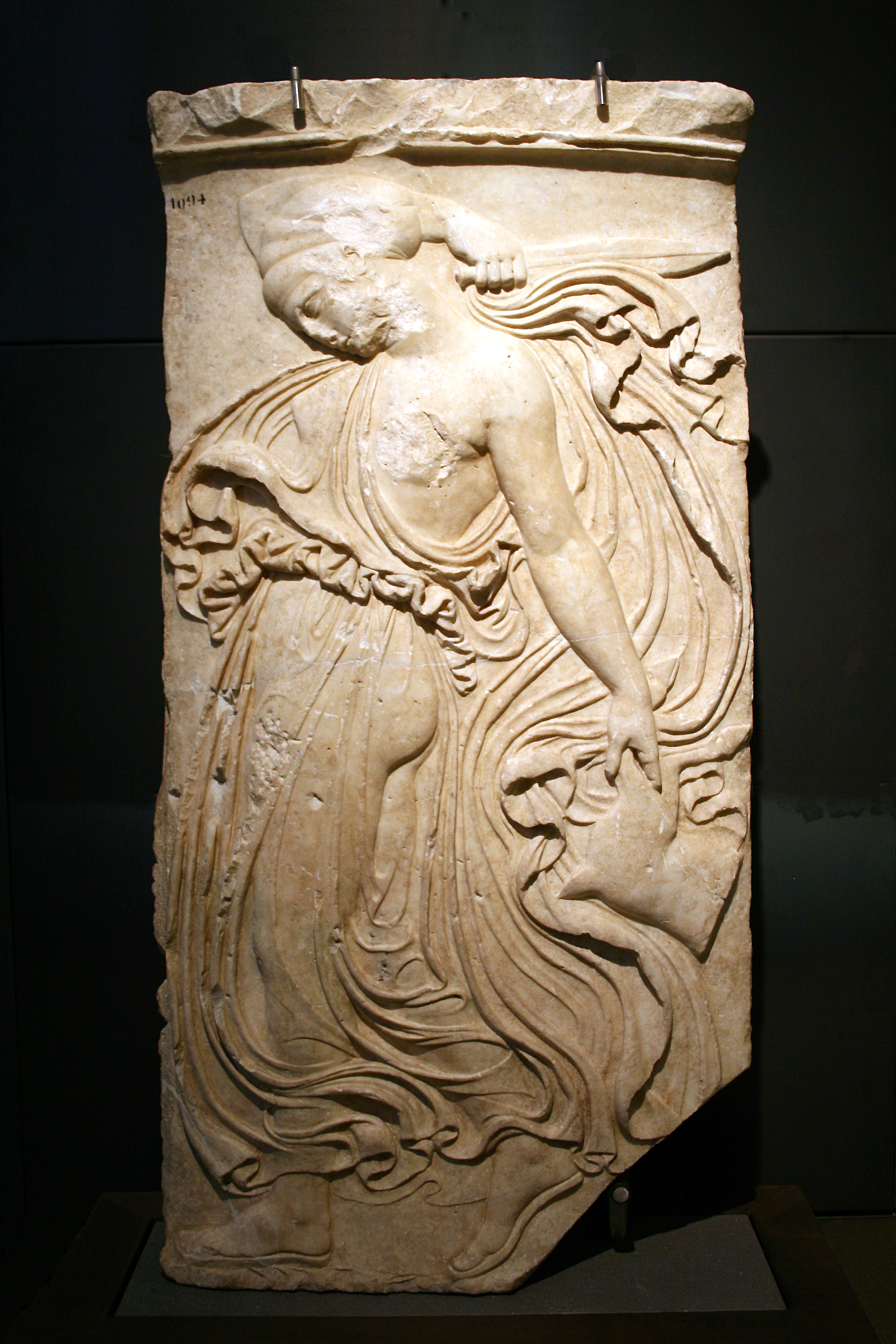Callimachus (sculptor) on:
[Wikipedia]
[Google]
[Amazon]
Callimachus ( grc, Καλλίμαχος ) was an
 Callimachus is credited with inventing the
Callimachus is credited with inventing the
SEG 46:830
- translation : here Kallim- ..of well-pillared temples (eustyloi naoi) .. of esteemed father...art.. from Aigai of the late 5th century BC may be attributed to some work of Callimachus and the time when Archelaus invited artists to Macedon.
Vitruvius Pollio, ''The Ten Books on Architecture,'' Book IV Chapter 1
from the Perseus Project.
Alleskunst.Net: Kallimachos
(in English)
*Andrew Stewart ''One Hundred Greek Sculptors: Their Careers and Extant Works''
"Attic Sculptors in the Peloponnesian War"
{{DEFAULTSORT:Callimachus 5th-century BC Greek sculptors Ancient Greek sculptors Ancient Greek architects Ancient Corinthians Ancient Athenian sculptors Artists of Archelaus I of Macedon
architect
An architect is a person who plans, designs and oversees the construction of buildings. To practice architecture means to provide services in connection with the design of buildings and the space within the site surrounding the buildings that h ...
and sculptor working in the second half of the 5th century BC in the manner established by Polyclitus. He was credited with work in both Athens and Corinth and was probably from one of the two cities. According to Vitruvius (iv.1), for his great ingenuity and taste the Athenians dubbed Callimachus ''katatêxitechnos'' (literally, 'finding fault with one's own craftsmanship': perfectionist). His reputation in the 2nd century AD was reported in an aside by Pausanias Pausanias ( el, Παυσανίας) may refer to:
* Pausanias of Athens, lover of the poet Agathon and a character in Plato's ''Symposium''
*Pausanias the Regent, Spartan general and regent of the 5th century BC
* Pausanias of Sicily, physician of ...
as one "although not of the first rank of artists, was yet of unparalleled cleverness, so that he was the first to drill holes through stones"—that is, in order to enhance surface effects of light and shade in locks of hair, foliage and other details. Thus it is reported that Callimachus was known for his penchant for elaborately detailed sculptures or drapery, though few securely attributed works by him survive.
Sculpture
Callimachus is credited with the sculptures of Nikes on the frieze of theTemple of Athena Nike
A temple (from the Latin ) is a building reserved for spiritual rituals and activities such as prayer and sacrifice. Religions which erect temples include Christianity (whose temples are typically called churches), Hinduism (whose tem ...
("Athena, Bringer of Victory") , by the Propylaea
In ancient Greek architecture, a propylaea, propylea or propylaia (; Greek: προπύλαια) is a monumental gateway. They are seen as a partition, specifically for separating the secular and religious pieces of a city. The prototypical Gree ...
of the Acropolis of Athens
The Acropolis of Athens is an ancient citadel located on a rocky outcrop above the city of Athens and contains the remains of several ancient buildings of great architectural and historical significance, the most famous being the Parthenon. T ...
. The small temple was commissioned by Pericles
Pericles (; grc-gre, Περικλῆς; c. 495 – 429 BC) was a Greek politician and general during the Golden Age of Athens. He was prominent and influential in Athenian politics, particularly between the Greco-Persian Wars and the Pelop ...
shortly before his death in 429, and built ''ca'' 427– 410. Pliny mentions his '' Laconian Dancers''. Six ecstatic ''Maenad
In Greek mythology, maenads (; grc, μαινάδες ) were the female followers of Dionysus and the most significant members of the Thiasus, the god's retinue. Their name literally translates as "raving ones". Maenads were known as Bassarids ...
s'' attributed to him exist in Roman copies.
The clinging draperies of the above works has led to the original of the Venus Genetrix type (whose draperies are similarly clinging) being also attributed to him.
Architecture
Corinthian capital
The Corinthian order (Greek: Κορινθιακός ρυθμός, Latin: ''Ordo Corinthius'') is the last developed of the three principal classical orders of Ancient Greek architecture and Roman architecture. The other two are the Doric order w ...
, which Roman architects erected into one of the Classical orders.
The attribution comes from Vitruvius's '' De architectura'':
In the cella of the Erechtheion hung an ingenious golden lamp called ''asbestos lychnis'' invented by Callimachus, according to Pausanias' ''Description of Greece'': it needed to be refilled with oil only once a year as the asbestos
Asbestos () is a naturally occurring fibrous silicate mineral. There are six types, all of which are composed of long and thin fibrous crystals, each fibre being composed of many microscopic "fibrils" that can be released into the atmosphere ...
wick did not burn. Above it hung a bronze palm branch which trapped any rising smoke.
An inscriptionMary Stieber: Further Thoughts on 'Eustylos' in Euripides' Iphigenia Among the Taurians, Vitruvius, and a Late Fifth-Century B. C. Inscription from Vergina 1996SEG 46:830
- translation : here Kallim- ..of well-pillared temples (eustyloi naoi) .. of esteemed father...art.. from Aigai of the late 5th century BC may be attributed to some work of Callimachus and the time when Archelaus invited artists to Macedon.
Ancient sources
*Pausanias Pausanias ( el, Παυσανίας) may refer to:
* Pausanias of Athens, lover of the poet Agathon and a character in Plato's ''Symposium''
*Pausanias the Regent, Spartan general and regent of the 5th century BC
* Pausanias of Sicily, physician of ...
, (I.xxvi.6-7); Vitruvius (IV.1.9-10); Pliny the Elder, ''Natural History'' XXXIV.xix.32)
Notes
External links
*Vitruvius Pollio, ''The Ten Books on Architecture,'' Book IV Chapter 1
from the Perseus Project.
Alleskunst.Net: Kallimachos
(in English)
*Andrew Stewart ''One Hundred Greek Sculptors: Their Careers and Extant Works''
"Attic Sculptors in the Peloponnesian War"
{{DEFAULTSORT:Callimachus 5th-century BC Greek sculptors Ancient Greek sculptors Ancient Greek architects Ancient Corinthians Ancient Athenian sculptors Artists of Archelaus I of Macedon